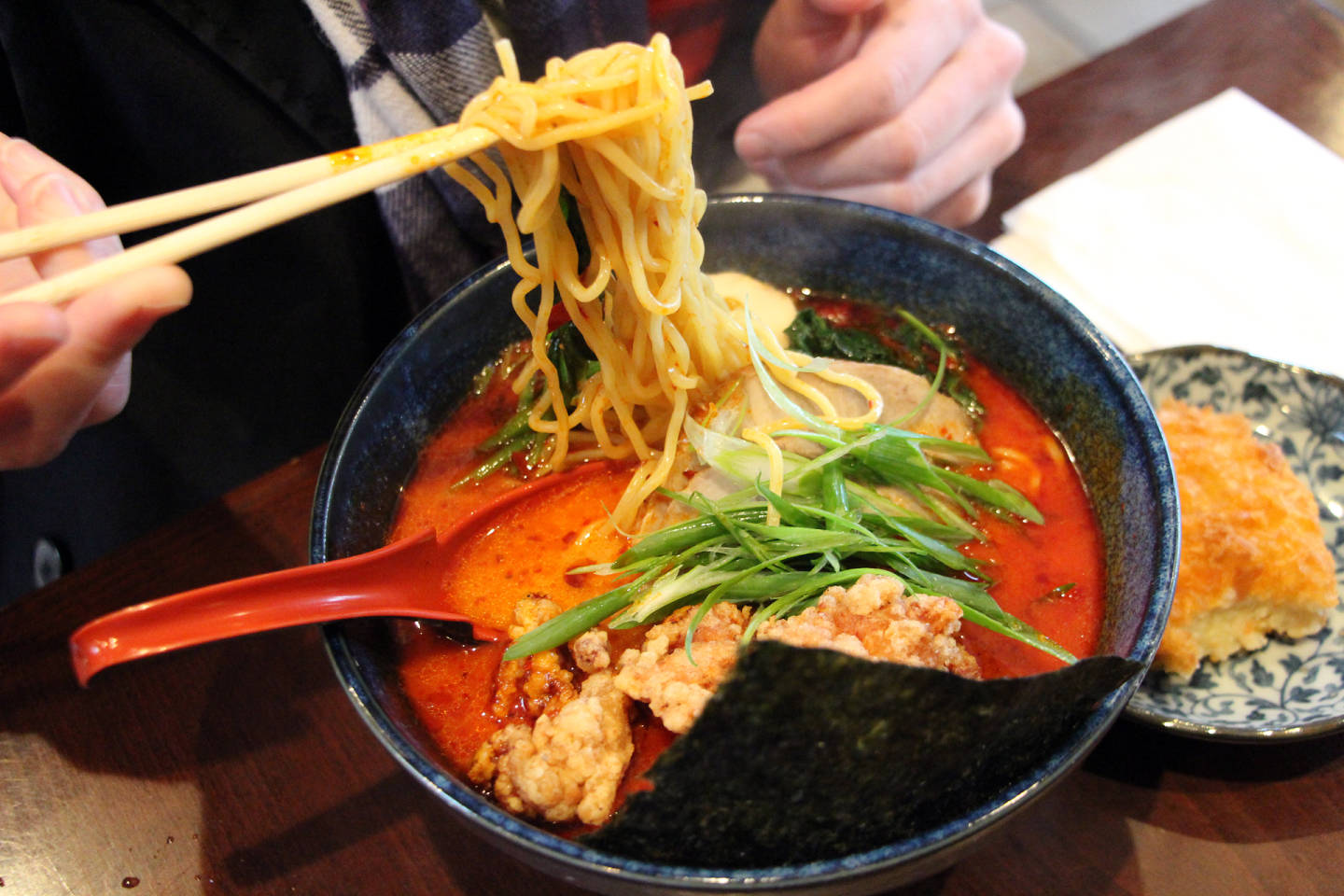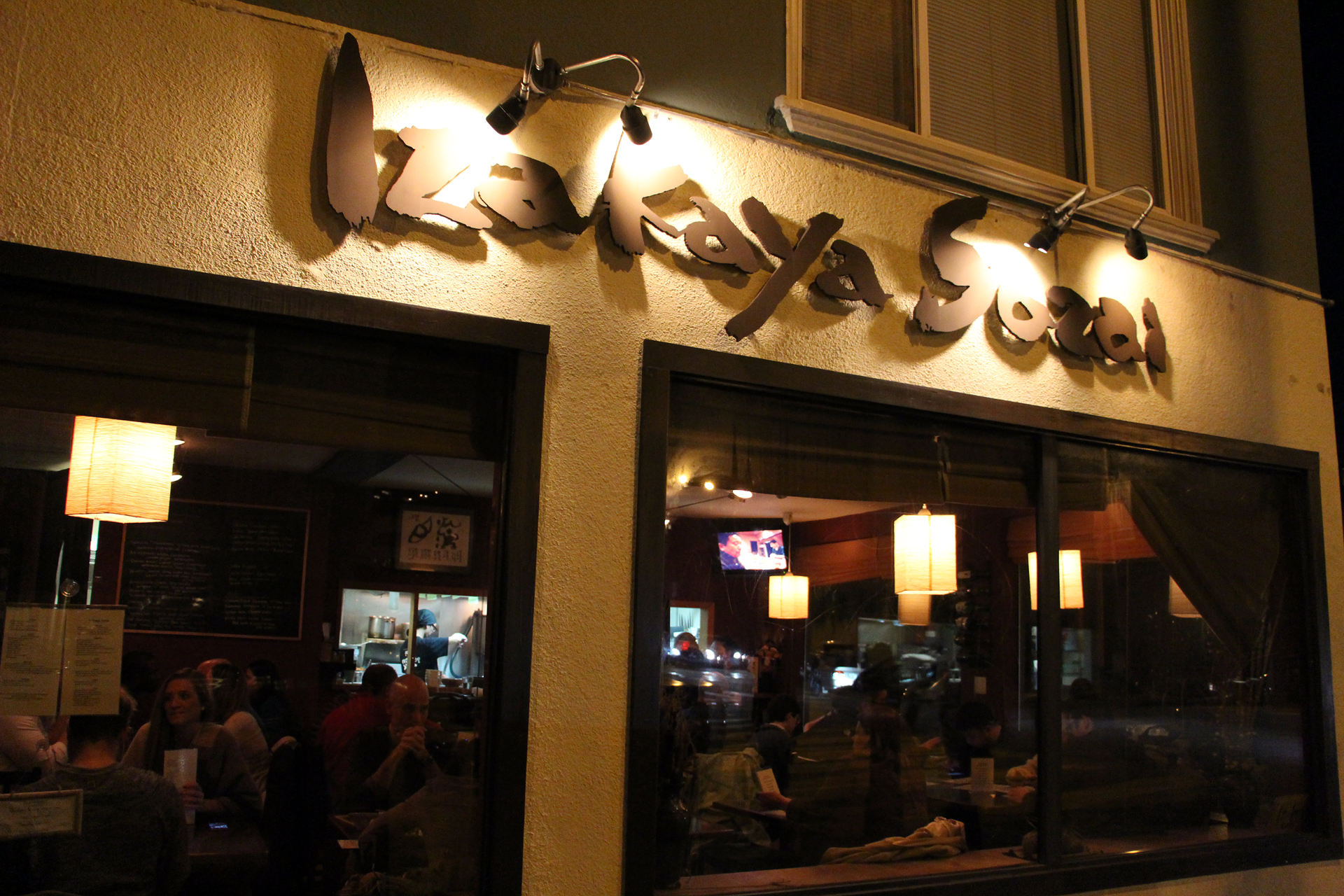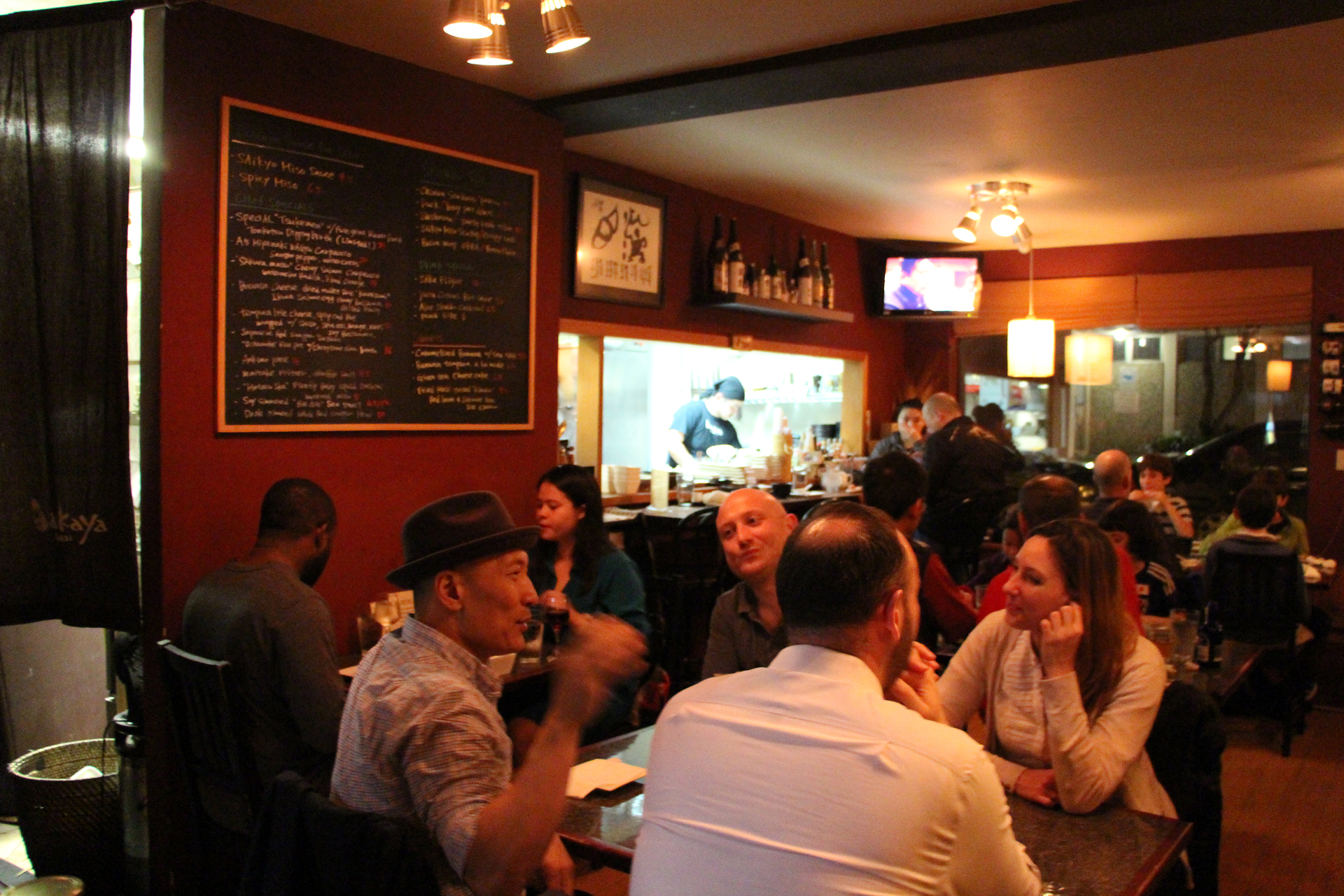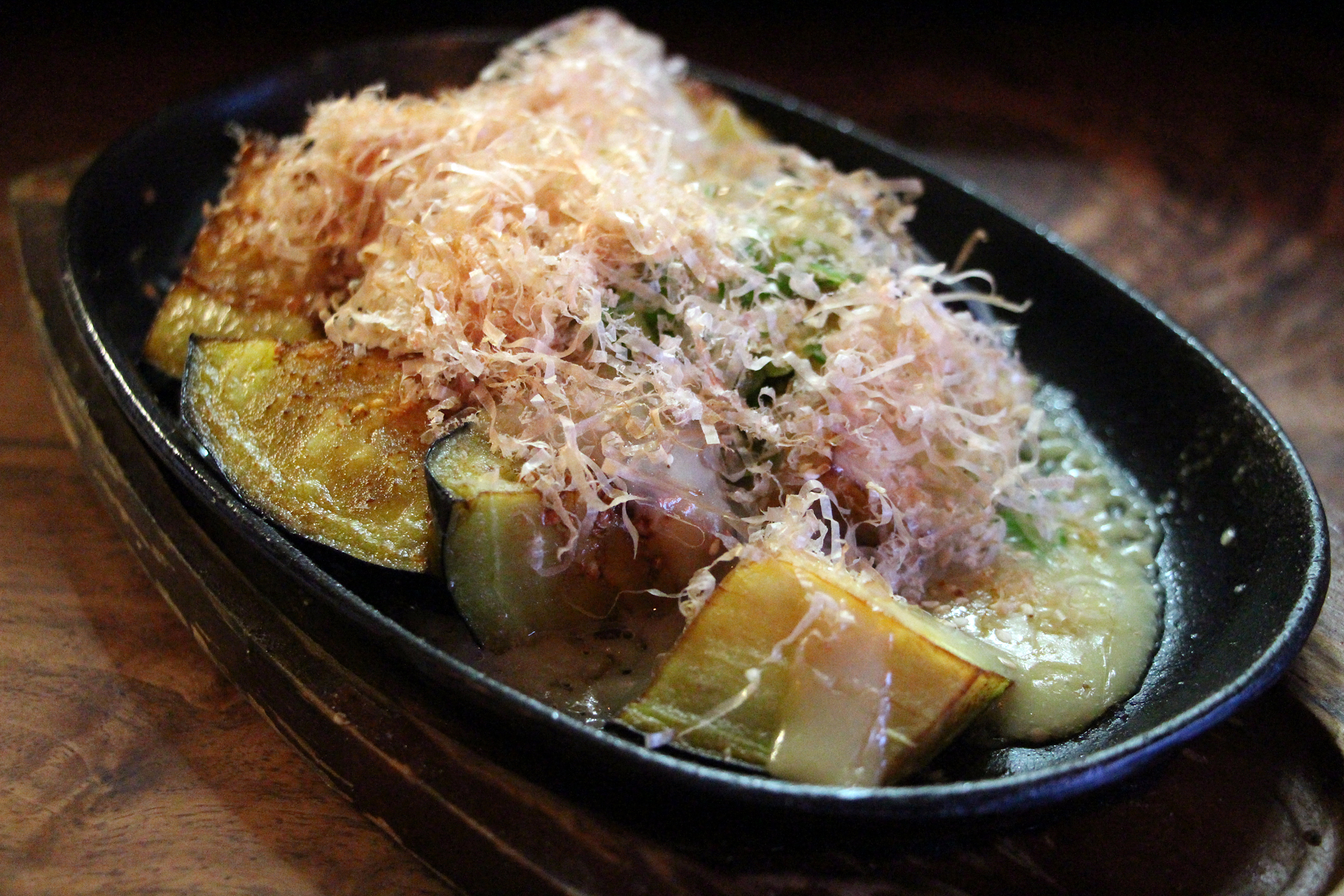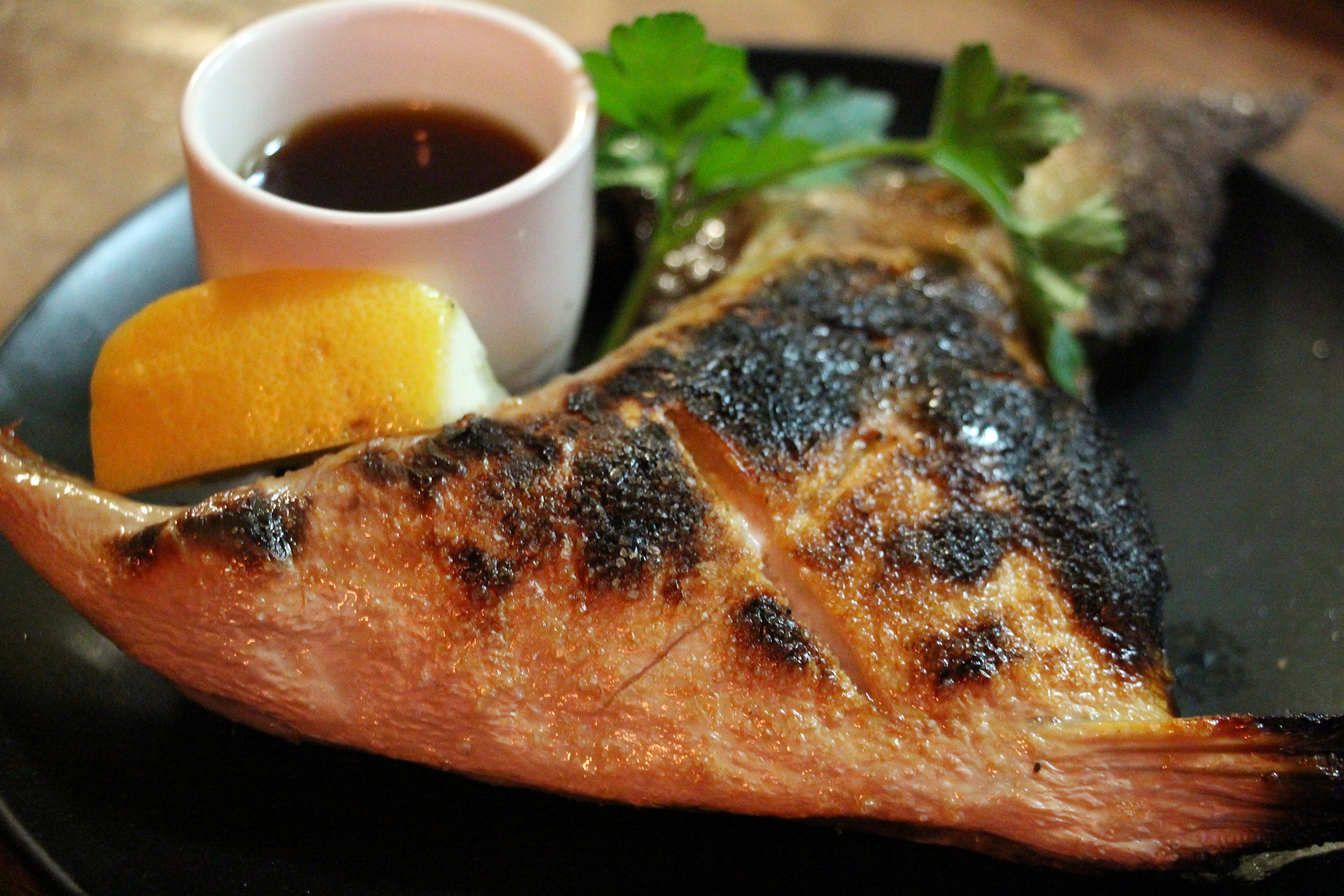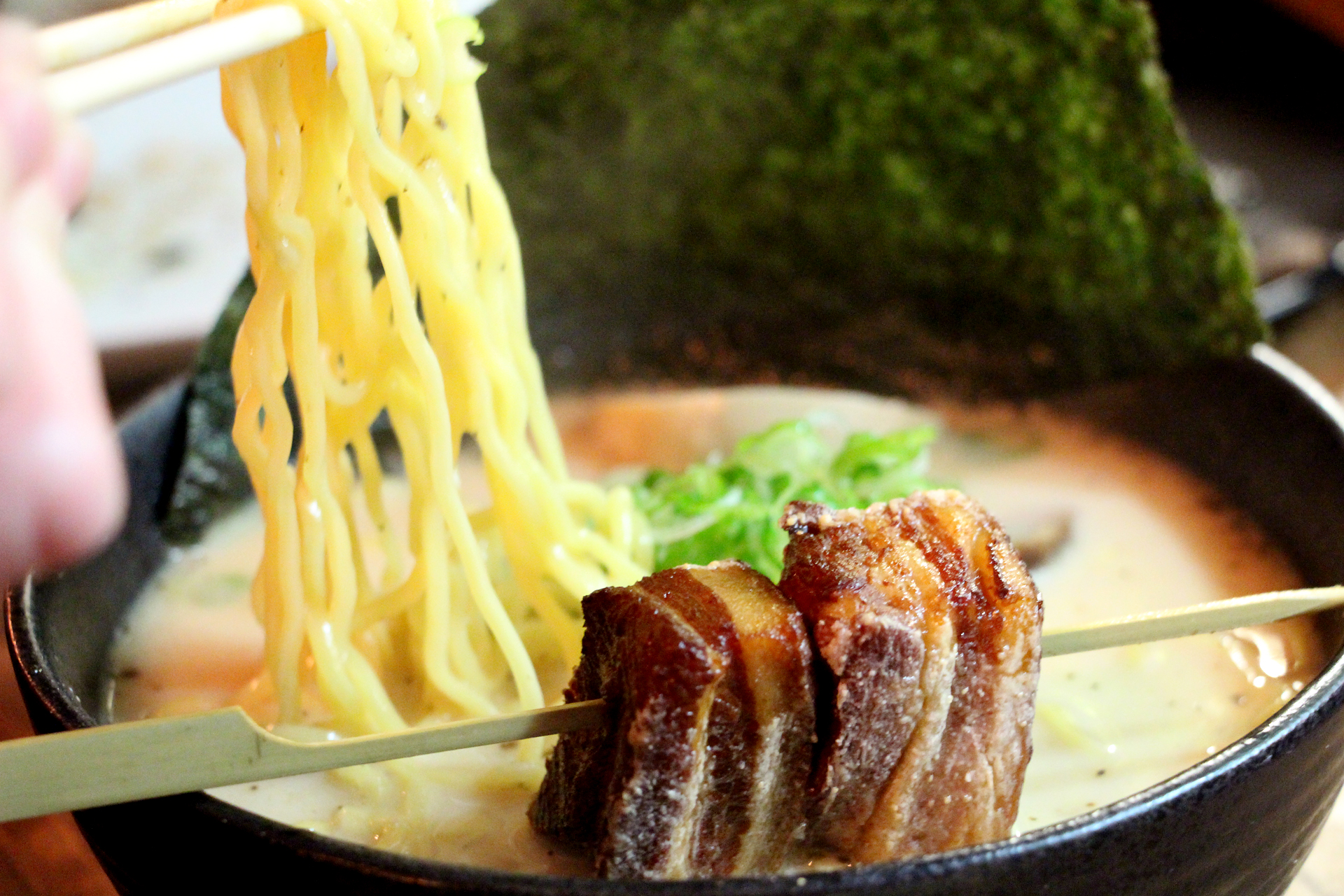There are lots of ramen places in the city -- lots and lots. And when it comes to neighborhoods filled with authentic and delicious bowls of noodles, the Sunset is certainly near the top of anyone's list. Wandering down the street looking for a delicious bowl is always an option for the adventurous diner. Or, you could try the two spots that dominate the neighborhood market, and conveniently are just blocks apart.
Sawaii Ramen is more of a small, non-flashy shop. If it's crowded, and it can be, you write your name on a clipboard and wait outside to be called. But this is not the kind of place that will call you multiple times or track you down, so stay near.
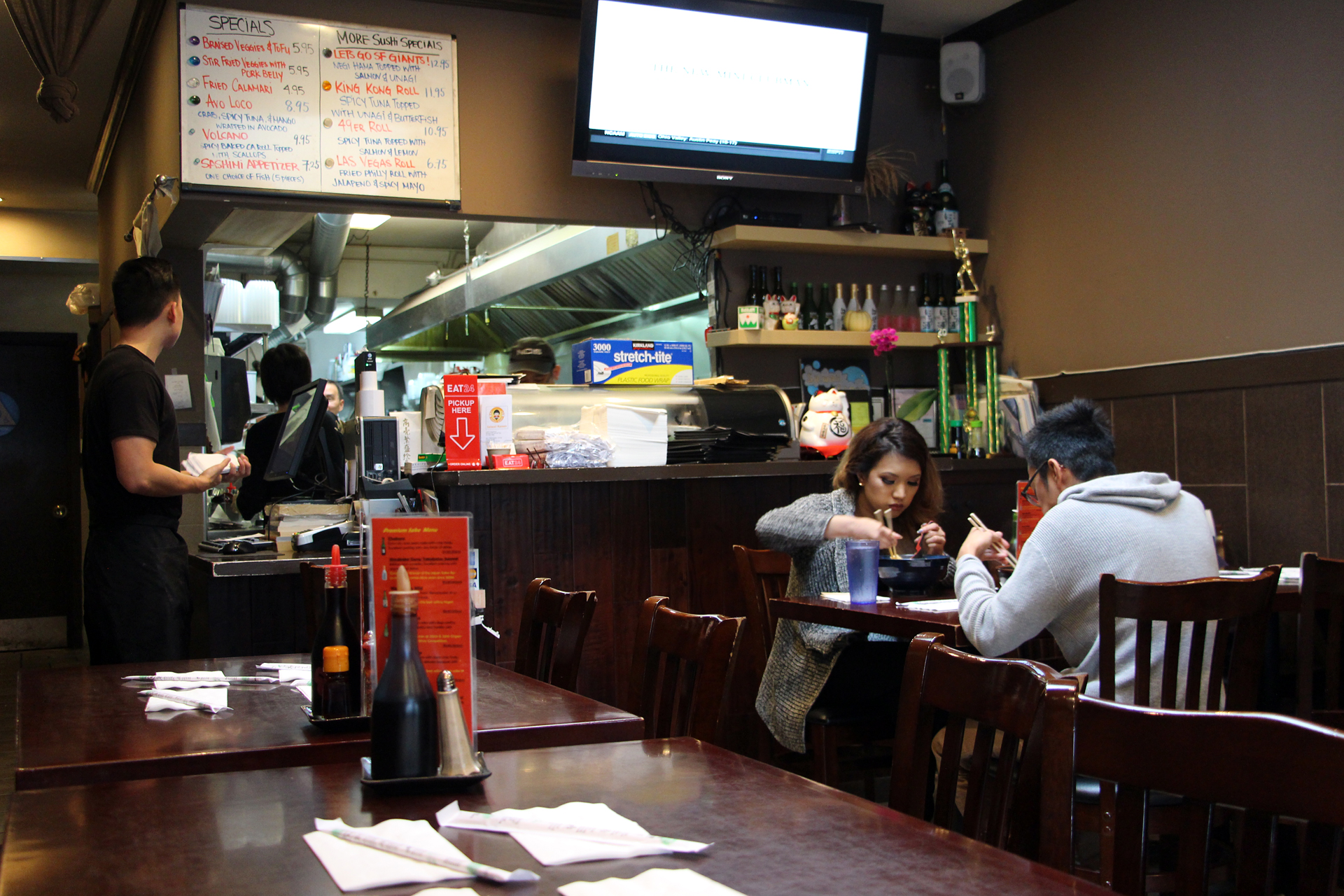
When we went, though, it was early and the small storefront was relatively empty. Service is simple and straight-forward. Specials are written on a board, and there is plenty to try besides ramen: sushi, appetizers, and a full menu of drinks.
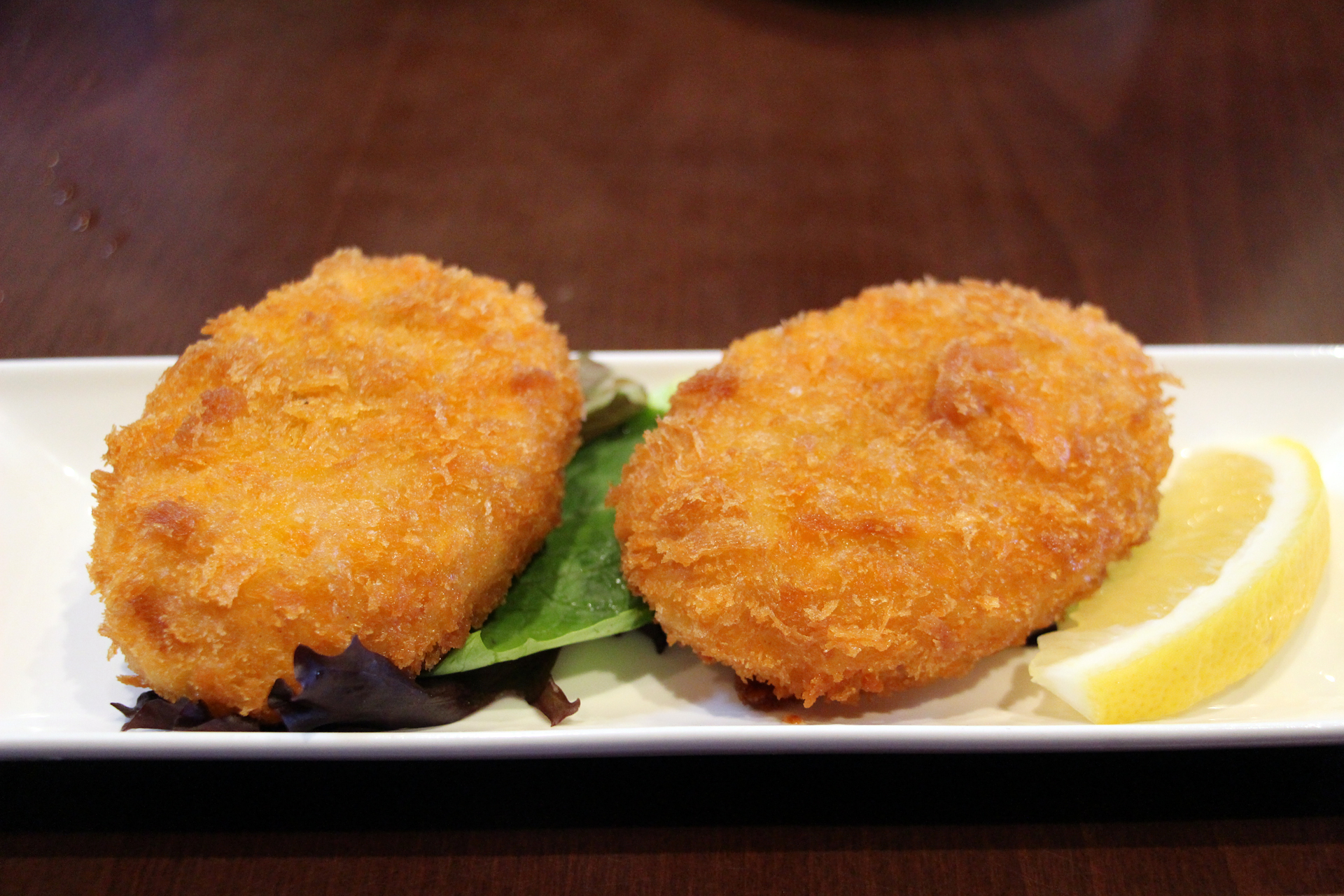
We had the croquettes ($4.50), fried balls of pork and potato that are soft and light. There are also grilled squid and chicken, fried oysters and crab, and even deep-fried tofu. If I'd known how filling the ramen bowls would be, though, I might have passed on the appetizers.
While Sawaii has a number of ramen options, it is most noted for it's specialty bowls, like the spicy mala ($10.95), which comes with pork, spinach, egg, nori, and kara age, a kind of breaded chicken. The kara age is unique and tasty, though a bit heavy, and the bowl itself has a spicy and complex flavor. It's not too spicy, but enough to give you a bit of a bite. The broth, itself, isn't particularly heavy either. My only complaint was that the pork can be chewy, and I, personally, prefer the pork in my ramen softer and falling off the spoon.
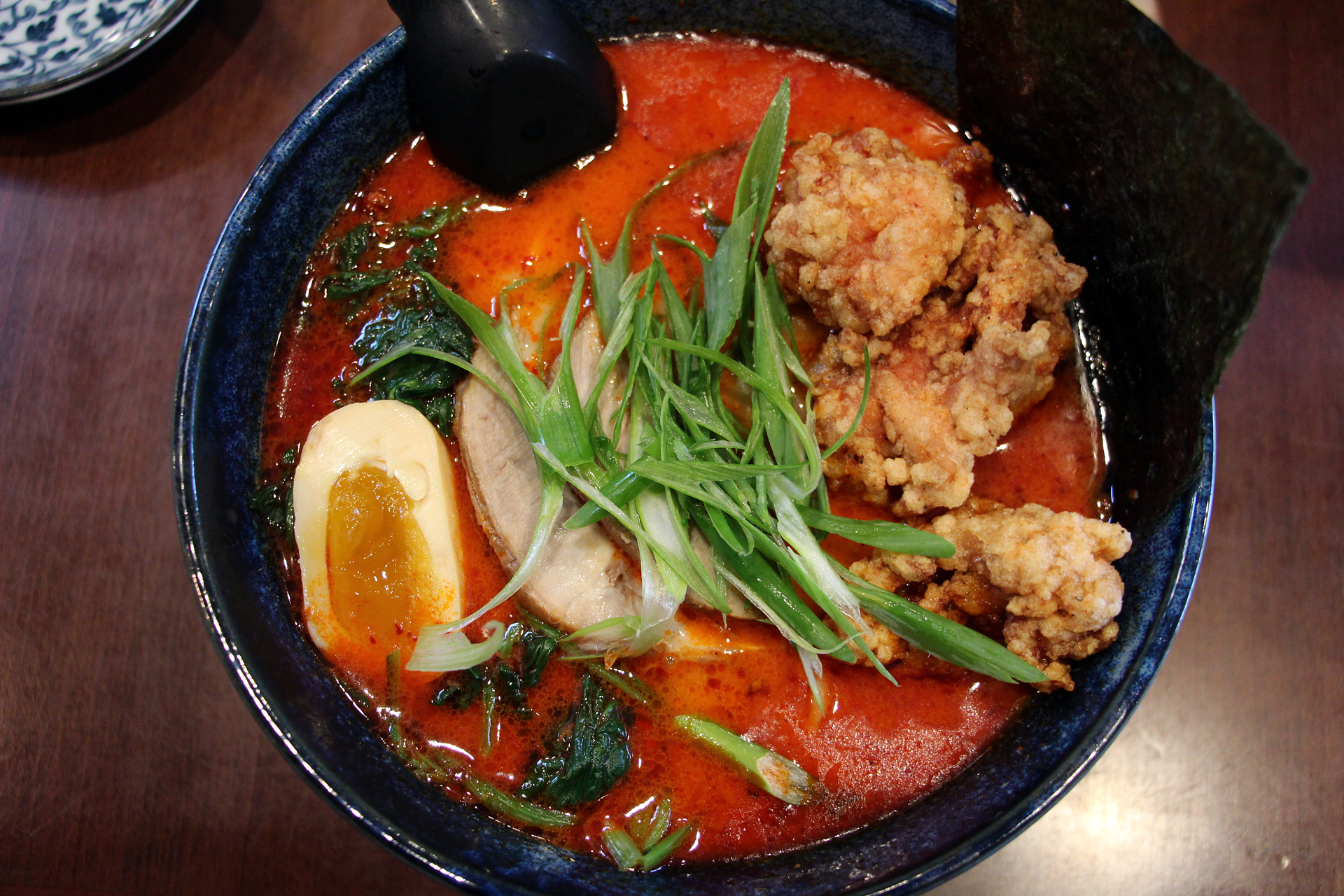
Sawaii does make all the classic ramen options -- tonkotsu, shoyu, shio, and miso (all $8.95) -- but I'd recommend a variation on the standard: the spicy garlic tonkotsu ($10.95). It comes with pork chasu, wakame, negi, menma, and you can add things like corn, spinach, mushrooms or egg. One word of warning, though: the spicy garlic comes in three options (mild, regular, or extra spicy); we tried the regular and found it cleared the nasal passages very effectively. The spicy garlic bowl has a heavier broth than the mala bowl and less complexity, but certainly no less intensity. The noodles in both are of the same thin variety.
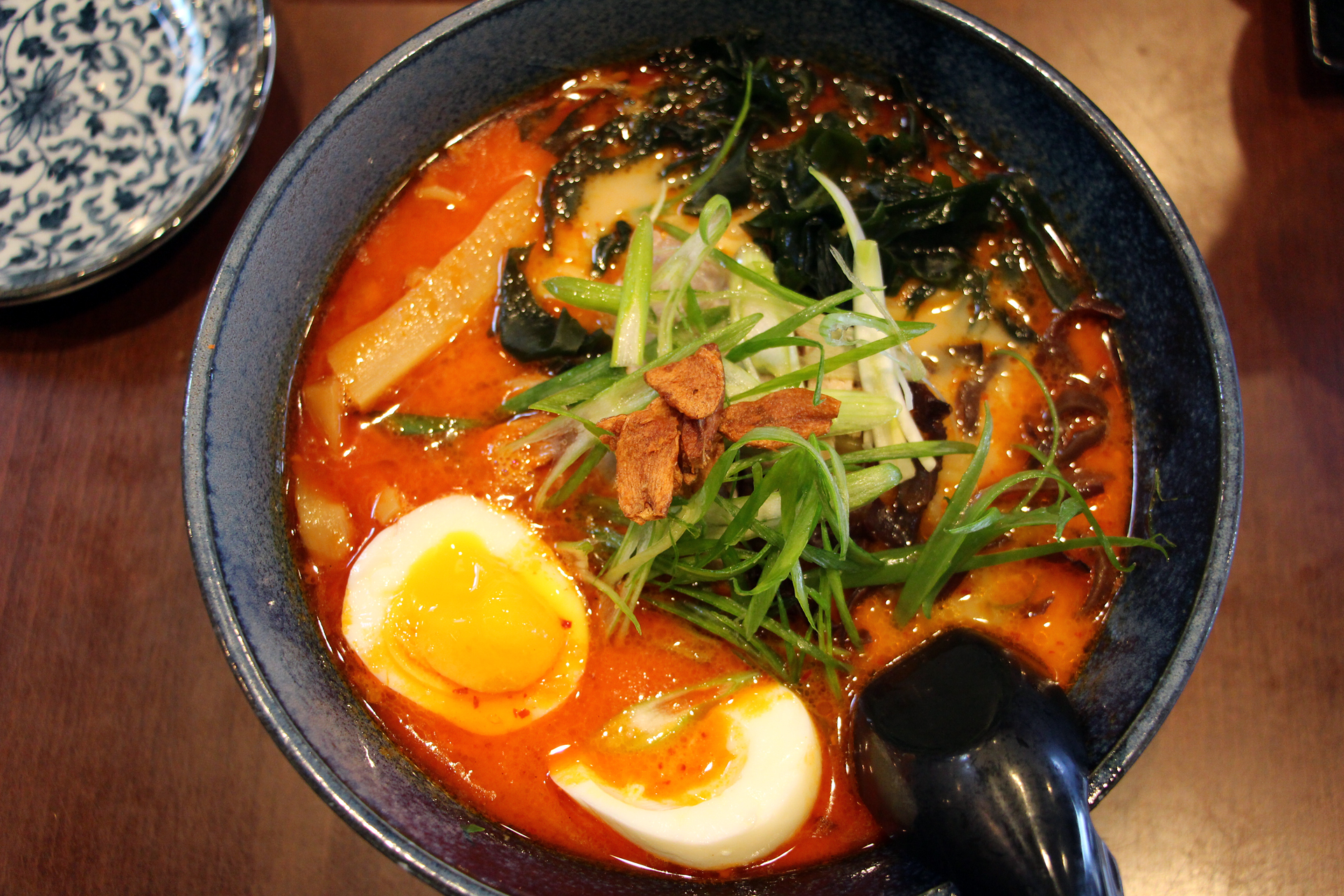
Most of the ingredients at the small shop come locally, though the noodles are from a Japanese distributor in San Jose. While the shop owners say that which distributor is a guarded secret, there are only a handful of possibilities that can be found by the avid Googler.
